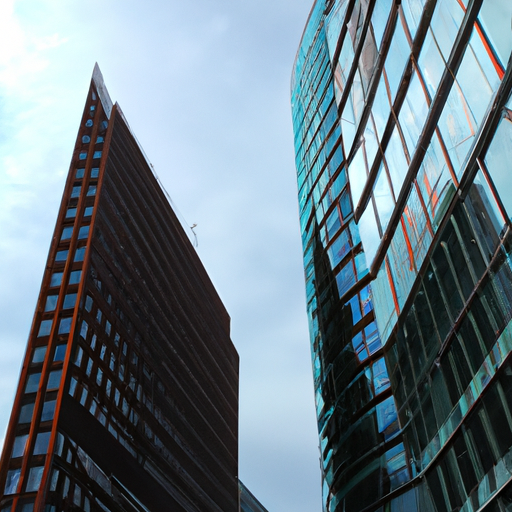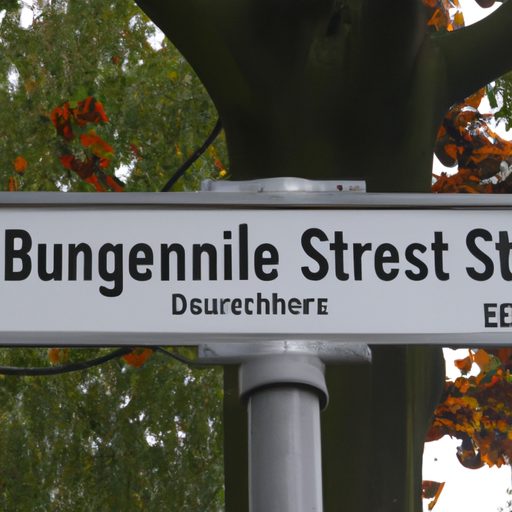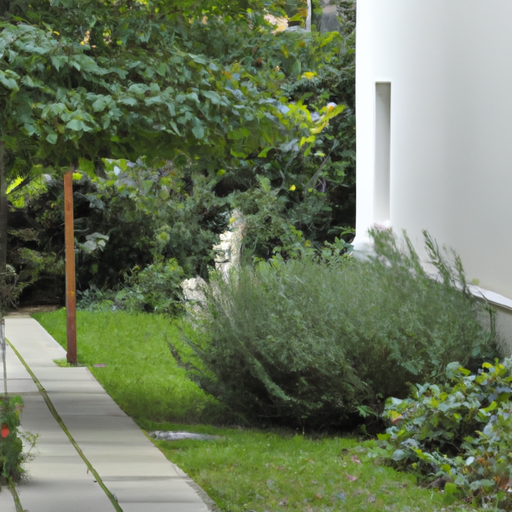Historic Landmarks of Potsdamer Platz
Alright, hold onto your Trilby hats and artisanal coffee, as we dive headfirst into the delicately layered strudel of history that is Potsdamer Platz. Let’s brush off the dust, and, like a cheeky Berliner flea market bargain hunter, uncover the gems hidden within its story. So, buckle up, dear readership, and let’s time travel through the centuries together, shall we?
In the beginning, there was dust. Lots of dust. And sheep. Probably. But then, in the 17th century, a certain King Frederick William had the bright idea to build a road from Potsdam to Berlin, thus birthing our beloved Potsdamer Platz. Back then, it was just an intersection, a mere blip on the city’s map, but it was about to get a whole lot busier.
Fast forward to the 19th century, when the Industrial Revolution decided to throw a rave in Berlin, and Potsdamer Platz was on the guest list. The city’s population boomed, and Potsdamer Platz transformed into a bustling transport hub. Trains, trams, automobiles, bicycles, horses, pedestrians, and the occasional unicycle, jumbled together in a mesmerizing dance of orchestrated chaos. It was a scene so bustling, it was akin to a squirrel on espresso, darting around a forest full of acorns.
Now, here’s a fun fact to impress your hipster friends at the next vegan BBQ: Potsdamer Platz was home to the first traffic light in continental Europe. Installed in 1924, it was a five-meter-tall behemoth with a policeman inside to manually control traffic. Picture that for a moment, a guy stuck in a tower all day, playing real-life ‘Frogger.’ It’s like a Monty Python sketch waiting to happen.
However, the roaring 20s brought more than just traffic to Potsdamer Platz. It morphed into the heart of Berlin’s nightlife, with cabarets, cinemas, and cafes popping up like mushrooms after the rain. It was the embodiment of the cultural heyday, a glitzy snapshot of the era, like Jay Gatsby had taken a detour to Berlin and decided to throw a party.
But as we all know, after every party comes the hangover. And boy, was it a big one. World War II hit, and unfortunately, Potsdamer Platz was right in the firing line. By the end of the war, it looked like a Dali painting. Buildings melted into rubble, and the once vibrant square was reduced to a desolate wasteland. It was a tough pill to swallow, like accidentally drinking the last sip of beer that’s been stewing in the sun all day.
Then came the Cold War, and with it, the Berlin Wall, slicing the city in two like a giant concrete bread knife. Potsdamer Platz found itself slap bang in the middle of no man’s land, a desolate wasteland where only rabbits and the occasional lost tourist dared to tread.
However, like a phoenix rising from the ashes, or more accurately, like a drunken reveler stumbling out of a Berghain after party, Potsdamer Platz emerged from its tumultuous past into the dawn of a new era. After the fall of the Wall in 1989, it became Europe’s biggest construction site. Architects from all over the globe flocked to the area, eager to leave their mark.
The result is the Potsdamer Platz we know today. A shining beacon of urban regeneration, brimming with modern architecture, like a futuristic sculpture garden. It’s home to the soaring towers of the Sony Center, which look like they were designed by a kid with an unlimited LEGO set. The Daimler Chrysler Areal, a complex so large it could probably be seen from space. And let’s not forget the Potsdamer Platz Arkaden, a shopping center so vast you’d need a GPS, a sherpa, and a week’s worth of supplies to navigate.
But amid all this glitz and glamour, the history of Potsdamer Platz is still very much alive. You can find traces of the old traffic tower, a piece of the Berlin Wall, and even tracks of the old Potsdam railway. Like a well-loved vintage jacket, it’s new and shiny, but with just enough patches and stitches to remind you of its past.
So, there you have it, folks, a whirlwind tour through the history of Potsdamer Platz. It’s been a wild ride, hasn’t it? From dust and sheep to a bustling metropolis, Potsdamer Platz is a testament to Berlin’s resilience, its ability to reinvent itself time and time again. It’s like Madonna of city squares, constantly evolving, yet always retaining its unique charm.
And remember, next time you’re at Potsdamer Platz, sipping on your chai latte, gazing up at the towering skyscrapers, take a moment to appreciate the layers of history beneath your feet. Because, as they say, those who cannot remember the past are condemned to repeat it. And who wants to repeat the 80s fashion, am I right?
Now, I’m off to find that sherpa, because I swear I left my keys somewhere in the Arkaden. Keep exploring, my friends, and remember, in the wise words of Ferris Bueller, “Life moves pretty fast. If you don’t stop and look around once in a while, you could miss it.”
Catch you on the flip side, Berliners!
Helpful Q&A:
Q: What is Potsdamer Platz, and why is it significant?
A: Well, let me tell you a tale that will make your history textbooks blush! Potsdamer Platz is a public square and traffic intersection in the heart of Berlin, Germany. It was named after the city of Potsdam, located a short carriage ride away. Now, you might be thinking, “It’s just a square, what’s the big deal?” But oh, my dear reader, it’s so much more than that!
In the roaring 1920s, Potsdamer Platz was the busiest and most bustling traffic hub in all of Europe, a symbol of the Golden Twenties, brimming with cafes, cabarets, and theaters. Imagine a Berliner version of Times Square. However, during World War II, Potsdamer Platz, like much of the city, was basically flattened. But the resilient Berlin spirit couldn’t be crushed! After the fall of the Berlin Wall, the Platz was reborn like a phoenix from the ashes with a modern architectural style that juxtaposes the city’s older buildings. Today, it’s home to major corporations, shopping centers, and the dazzling Sony Center.
Q: Can you share some iconic landmarks at Potsdamer Platz?
A: Absolutely, my friend! First, there’s the Sony Center, a futuristic architectural marvel that houses offices, restaurants, a film museum, cinemas, and even an IMAX. When the sun goes down, the roof lights up like an alien mothership, a spectacle that’s truly out of this world!
Then, there’s the Potsdamer Platz Arkaden, a shopping center that would make even the most seasoned shopaholic weak at the knees. With over 130 shops spread across three floors, it’s a consumer’s paradise. Don’t worry, there’s plenty of cafes for those needing a caffeine boost from all that shopping.
For the culture vultures, there’s the Kulturforum, a collection of state museums, libraries, and concert halls. Its crown jewel is the Gemäldegalerie, an art museum boasting one of the world’s leading collections of European paintings.
But let’s not forget the historic remnants of the Berlin Wall. A section of the Wall still stands near Potsdamer Platz, a solemn reminder of the city’s divided past.
Q: What events or festivals are held at Potsdamer Platz?
A: Oh, Potsdamer Platz knows how to throw a party! One of the most glamorous events is the Berlin International Film Festival, also known as the Berlinale. Every February, the red carpet rolls out, and the world’s film elite descend upon Potsdamer Platz. Film buffs, this is your chance to rub shoulders with Hollywood stars!
In the winter months, Potsdamer Platz transforms into a winter wonderland, hosting one of the city’s most popular Christmas markets. Picture this: twinkling lights, gingerbread-scented air, and the sound of Christmas carols filling the square. It’s enough to thaw even the coldest of hearts!
So there you have it, folks! Potsdamer Platz is not just a square—it’s a canvas where history, culture, and modernity paint a vibrant picture of Berlin. Whether you’re a history buff, a shopaholic, or a culture enthusiast, Potsdamer Platz has something for you. Now, I must be off; my pretzel is getting cold!


